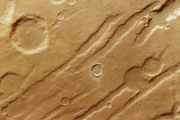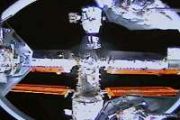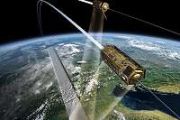
Copernical Team
Rhodes wildfire forces thousands to flee
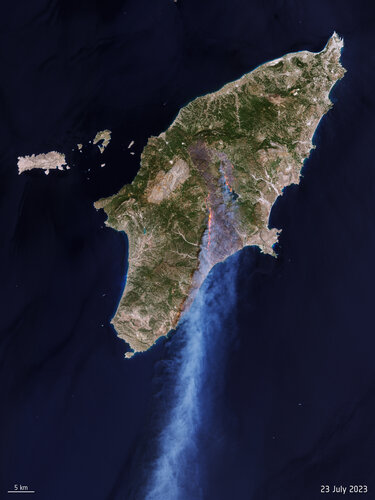 Image:
Rhodes wildfire forces thousands to flee
Image:
Rhodes wildfire forces thousands to flee Webb detects water vapour in rocky planet-forming zone
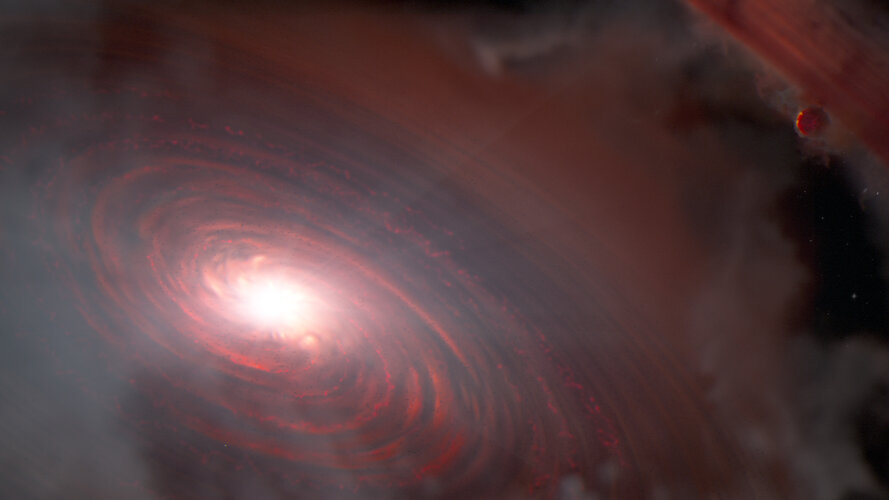
New measurements by the NASA/ESA/CSA James Webb Space Telescope’s Mid-InfraRed Instrument (MIRI) has detected water vapour in the inner disc of the system PDS 70, located 370 light-years away. This is the first detection of water in the terrestrial region of a disc already known to host two or more protoplanets.
Probe the space weather around Earth

Launching soon on one of the next cargo missions to the International Space Station is the Multi-Needle Langmuir Probe that will measure the “weather” in the upper atmosphere. The experiment is part of ESA astronaut Andreas Mogensen’s Huginn mission climate science.
OneSat’s robot arms enable fully European propulsion

A robotic arm – entirely developed and built in Europe – that enables a satellite to change and control its orbit fuel efficiently has passed its qualification review for launch into space on the OneSat range of satellites.
New Galileo station goes on duty
 Image:
New Galileo station goes on duty
Image:
New Galileo station goes on duty Revolutionary materials and techniques transform aircraft construction
 For many decades, the aircraft industry has predominantly relied on aluminium for manufacturing. Today, however, the drive for more sustainable, climate-friendly air travel necessitates innovative solutions. In a groundbreaking development, the German Aerospace Center (DLR), in partnership with Premium AEROTEC, Airbus, and Aernnova, has presented a prototype for an entirely new approach to aircr
For many decades, the aircraft industry has predominantly relied on aluminium for manufacturing. Today, however, the drive for more sustainable, climate-friendly air travel necessitates innovative solutions. In a groundbreaking development, the German Aerospace Center (DLR), in partnership with Premium AEROTEC, Airbus, and Aernnova, has presented a prototype for an entirely new approach to aircr Enabling autonomous exploration
 A research group in Carnegie Mellon University's Robotics Institute is creating the next generation of explorers - robots.
The Autonomous Exploration Research Team has developed a suite of robotic systems and planners enabling robots to explore more quickly, probe the darkest corners of unknown environments, and create more accurate and detailed maps. The systems allow robots to do all thi
A research group in Carnegie Mellon University's Robotics Institute is creating the next generation of explorers - robots.
The Autonomous Exploration Research Team has developed a suite of robotic systems and planners enabling robots to explore more quickly, probe the darkest corners of unknown environments, and create more accurate and detailed maps. The systems allow robots to do all thi World Nano Foundation highlights nanotech's role in space materials science
 The World Nano Foundation (WNF), an international not-for-profit body dedicated to commercializing nanoscale technologies, has announced the publication of its latest white paper titled "Space Exploration: Unveiling the Potential of Nanotechnology in Advanced Materials Science." This document dives deep into the breakthroughs in materials science, which are propelling a revolution in space explo
The World Nano Foundation (WNF), an international not-for-profit body dedicated to commercializing nanoscale technologies, has announced the publication of its latest white paper titled "Space Exploration: Unveiling the Potential of Nanotechnology in Advanced Materials Science." This document dives deep into the breakthroughs in materials science, which are propelling a revolution in space explo Detecting threats beyond the limits of human, sensor sight
 Remember what it's like to twirl a sparkler on a summer night? Hold it still and the fire crackles and sparks but twirl it around and the light blurs into a line tracing each whirl and jag you make.
A new patented software system developed at Sandia National Laboratories can find the curves of motion in streaming video and images from satellites, drones and far-range security cameras and t
Remember what it's like to twirl a sparkler on a summer night? Hold it still and the fire crackles and sparks but twirl it around and the light blurs into a line tracing each whirl and jag you make.
A new patented software system developed at Sandia National Laboratories can find the curves of motion in streaming video and images from satellites, drones and far-range security cameras and t Chemical cartography reveals the Milky Way's spiral arms
 Keith Hawkins, assistant professor of astronomy at The University of Texas at Austin, has used chemical cartography - also known as chemical mapping - to identify regions of the Milky Way's spiral arms that have previously gone undetected. His research, published in the Monthly Notices of the Royal Astronomical Society, demonstrates the value of this pioneering technique in understanding the sha
Keith Hawkins, assistant professor of astronomy at The University of Texas at Austin, has used chemical cartography - also known as chemical mapping - to identify regions of the Milky Way's spiral arms that have previously gone undetected. His research, published in the Monthly Notices of the Royal Astronomical Society, demonstrates the value of this pioneering technique in understanding the sha 


